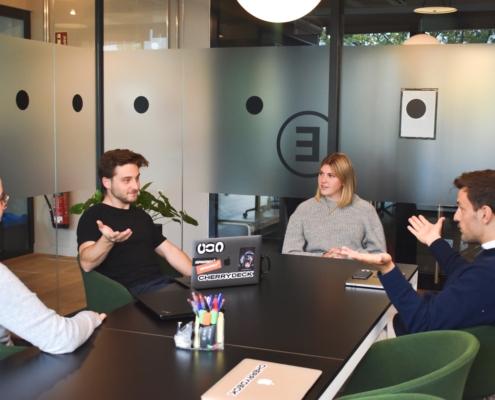Expanding Team Member Capabilities

Photo by The Jopwell Collection on Unsplash
The people on each project team have unique skills and strengths. To increase the effectiveness of your teams, look for opportunities to leverage and expand those attributes. Here are four approaches for expanding team member capabilities.
- Identify and leverage team member strengths. Take time to identify your team members’ strengths and weaknesses. Ask them questions to uncover their individual talents and preferences. Use what you learn to assign tasks that are best suited to their skill set. Also, look for opportunities to expand their experiences. Assignments that increase skills generate enthusiasm and loyalty, which can help you achieve better project results .
- Create a learning culture. Establish a culture of learning and continuous improvement. Set up opportunities to learn from you (the PM) and from other team members, such as lunch and learns, or cross-training sessions. Set up sessions where team members present their work and share their expertise. This can expand knowledge and perspectives throughout your project team. In addition, it will increase your team flexibility if a team member will be absent. When practical, support your team members when they try new approaches or work out of their comfort zone. You’ll improve team dynamics and project outcomes.
- Facilitate candid and courageous risk-based communication. Encourage team members to share their experiences, even when challenging the status quo. Every team member’s experience is valid. To reduce risk, use their collected pool of experience to determine the best direction . Make sure that stakeholders who are risk-averse don’t discourage team members from voicing their concerns. You will reinforce the value you place on team experience and enhance their sense of project ownership.
- Focus on formal professional development. A learning-focused project environment creates significant professional development opportunities. You can go further by supporting team members in their pursuit of formal training and certifications. That way, they can increase their skills and stay up to date with industry trends. In turn, this helps you deliver better outcomes.
Whether you are a project manager or team member, what are your preferred approaches for expanding capability? Share with us in the comments section.
For more about team building, check out Daniel Stanton’s Project Management Foundations: Teams course.
Coming Up
On May 18th 4PM MT, I will be joining Christina Charenkova to talk about how Project Managers and Change Managers collaborate on things like scope, communication, and stakeholder management. We’ll discuss how to leverage and clarify roles and plans, avoid pitfalls, and collaborate better for awesome outcomes! Sign up here: https://www.linkedin.com/events/7056412593510363136
_______________________________________
This article belongs to the Bonnie’s Project Pointers newsletter series, which has more than 35,000 subscribers. This newsletter is 100% written by a human (no aliens or AIs involved). If you like this article, you can subscribe to receive notifications when a new article posts.
Want to learn more about the topics I talk about in these newsletters? Watch my courses in the LinkedIn Learning Library and tune into my LinkedIn Office Hours live broadcasts.
_______________________________________









